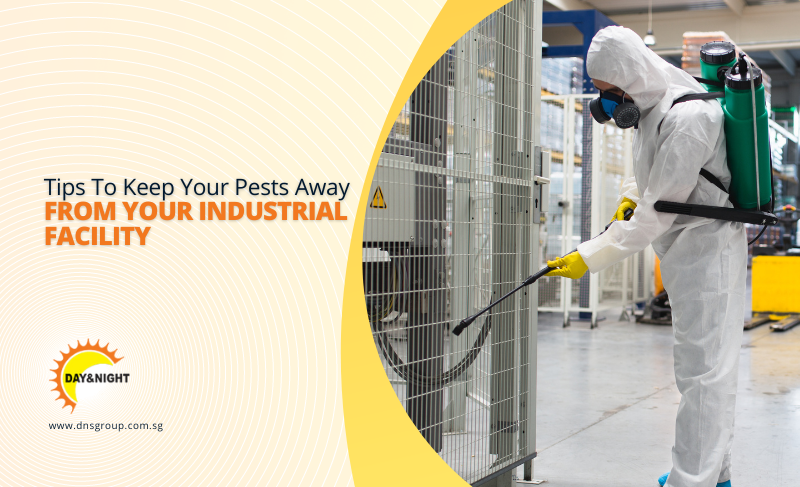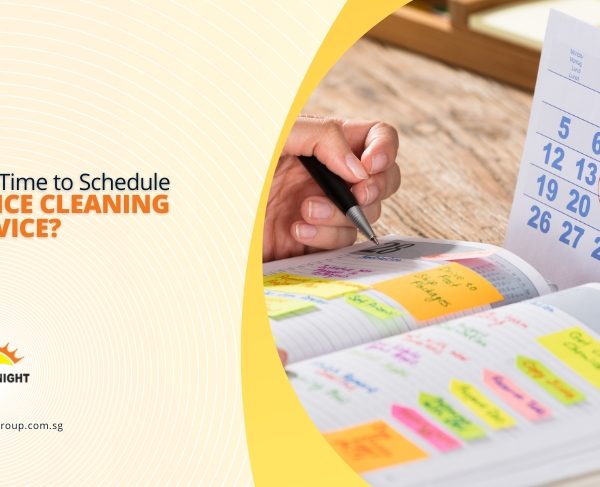Tips To Keep Your Pests Away From Your Industrial Facility

The needs of industrial facilities are varied, depending on the goods they manufacture. It is particularly true when it comes to pest control. Nothing is entirely immune to pest infestation, regardless of how organised your facility or warehouse may be. With the right knowledge, you can properly identify, get rid of, and prevent pests.
Pest Prevention Tips
Prevention of pest problems is the heart of any state-of-the-art integrated pest management program. In conjunction with sanitation efforts, pest-proofing provides the best long-term management of industrial pest infestations. Routine cleaning is essential, but some particles can help keep animals or insects away. The following preventative strategies can be used at your facility:
- Perform routine cleaning and inspection from the roof to the basement floor.
- Seal cracks, holes, or crevices to prevent infiltration through narrow spaces.
- Reduce the clutter in areas where pests can hide and thrive.
- Remove possible food and water sources, such as food scraps and stagnant waters.
- Store goods and items in safe and enclosed containers.
- Throw away garbage regularly and secure it with a tightly closed lid.
The Pests You Usually See
Whether your pest is an insect or an animal, correct pest identification makes controlling it easier and more effective. A mistake in identifying the pest that infiltrated your industrial space can lead to improper control tactics, costing time and money and jeopardising the safety and welfare of the people in the industrial plant. Here some common pests you may encounter:
- Ants
- Bed bugs
- Birds
- Cockroaches
- Flies
- Mosquitoes
- Rodents
Once pests invade your workplace, they can cause severe damage to the building and the general safety of you and your employees.
Pest Control Methods
Once you have identified a pest infestation, it is time to take immediate action. There are many ways to control pests, including setting up traps and lures, applying gels and baits, and misting and spraying the targeted area. Pest control treatments are dependent on the type of the pest and its active ingredients, while the dosage is designed based on the species and the severity of infestation. Digital pest control is also available, which has a sensing technology to detect and control pests effectively and accurately. Fly traps are put strategically on walls and other surfaces to lure and trap adult flies. Pest treatments can have the following options:
- One-off visit where the pest specialist carries out pest control for a targeted problem, typically a localised treatment for quick pest elimination.
- Long-term contract commitment where the specialist visits the facility for regular inspection, detection, monitoring, and treatment. This is ideal for long-term protection and proactive prevention purposes.
- Intensive programme, usually for severe pest infestation that requires intensive treatment. You may consider maintenance treatment to ensure your pest problem is under control.
Integrated Pest Management
Before you call on someone for pest concerns, consider trying out integrated pest management. It is an environmentally sensitive and effective approach to pest management that makes use of updated and comprehensive information on the life cycles of pests and how they interact with the environment. In combination with available pest control methods, this information is used to manage pest damage and employ preventive measures to keep pests away by the most economical means and with the least hazard to people and the environment.
Integrated pest management can be applied to both agricultural and non-agricultural settings, such as residential and commercial areas. It is not a single pest control method but a series of management evaluations and decisions. In practice, you should follow a four-tiered approach:
-
Set action thresholds
You must set an action threshold, a situation at which a certain condition indicates that pest control action must be taken. Seeing some pests does not always mean control is needed. You must set the level at which pests become an economic threat so your future pest control decisions will be guided.
-
Monitor and identify pests
Monitoring for pests and identifying them accurately must be made so that appropriate control decisions can be made. It removes the possibility of using pesticides when they are not really needed or when the wrong pesticide will be used.
-
Prevention
As the first line of control, IPM works to manage any space to prevent pests from becoming a threat. Devise control methods that you think are both effective and cost-efficient and have little to no risk to people or the environment.
-
Control
When action thresholds, monitoring, and identification indicate that pest control is needed, and the preventative methods are unavailable or ineffective, you must assess the best alternative for proper pest control – high effectiveness but low to no risk. If less risky controls are not working, supplemental control methods such as targeted pesticide spraying can be employed. Bear in mind that broadcast spraying, a high-risk control method, should be considered a last resort.
The Ultimate Solution to Pest Infestation
Pest prevention and control can be challenging to facility managers, primarily if the industrial site is located in a pest-prone area. It is then recommended that businesses engage with an industrial cleaning service provider to handle any pest issues and assist with the correct planning and implementation of an integrated pest management plan.
Recent Articles
Categories
- Cleanroom Cleaning (1)
- Commercial Cleaning Services (20)
- Commercial Kitchen Cleaning (2)
- Disinfection Cleaning Services (1)
- Disinfection Services Singapore (2)
- Floor Cleaning Services (2)
- Home Cleaning Services (1)
- House Cleaning Services (1)
- Industrial Cleaning Services (15)
- Kitchen Cleaning Services (4)
- Office Cleaning Services (19)
- Pest Control Services (2)
Get in touch with our cleaning team today for a quote.

Enquire Here
Kindly leave your details below and we will contact you back shortly. Thank You!







